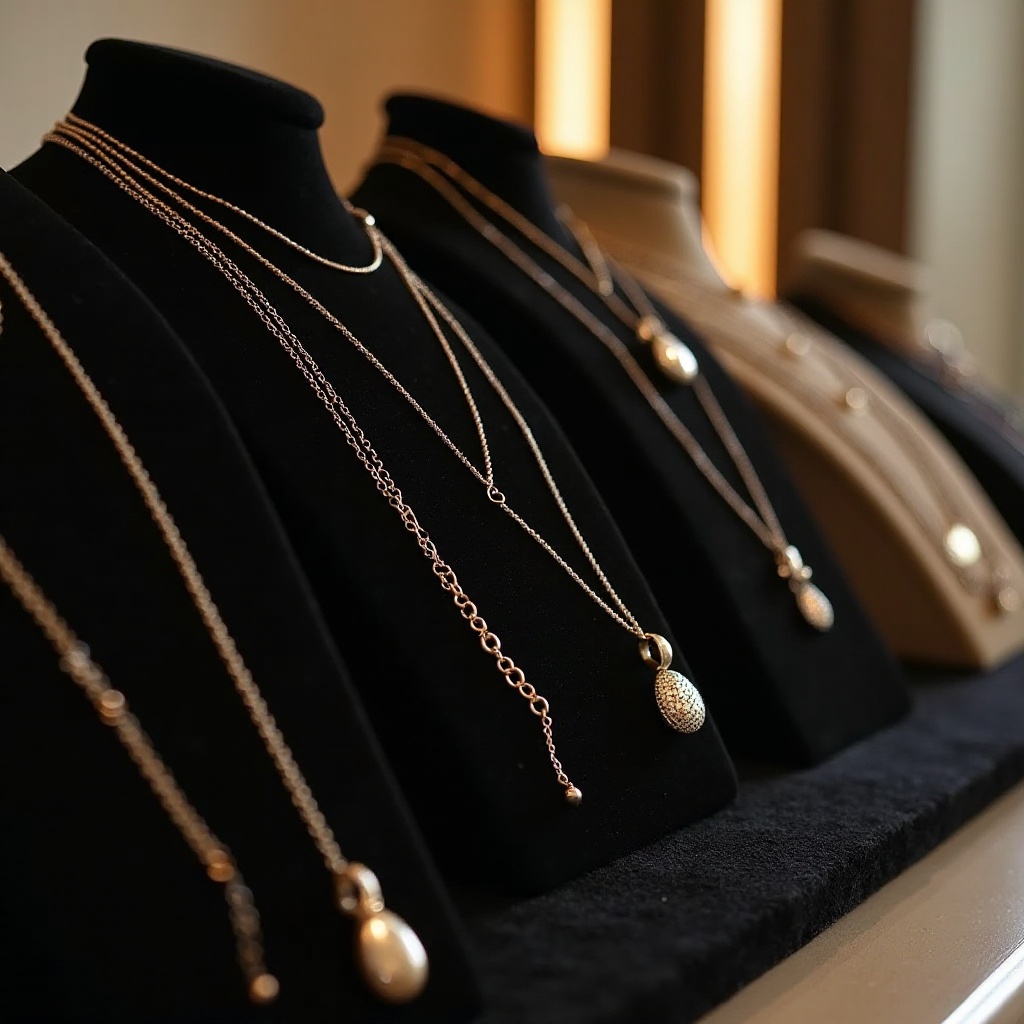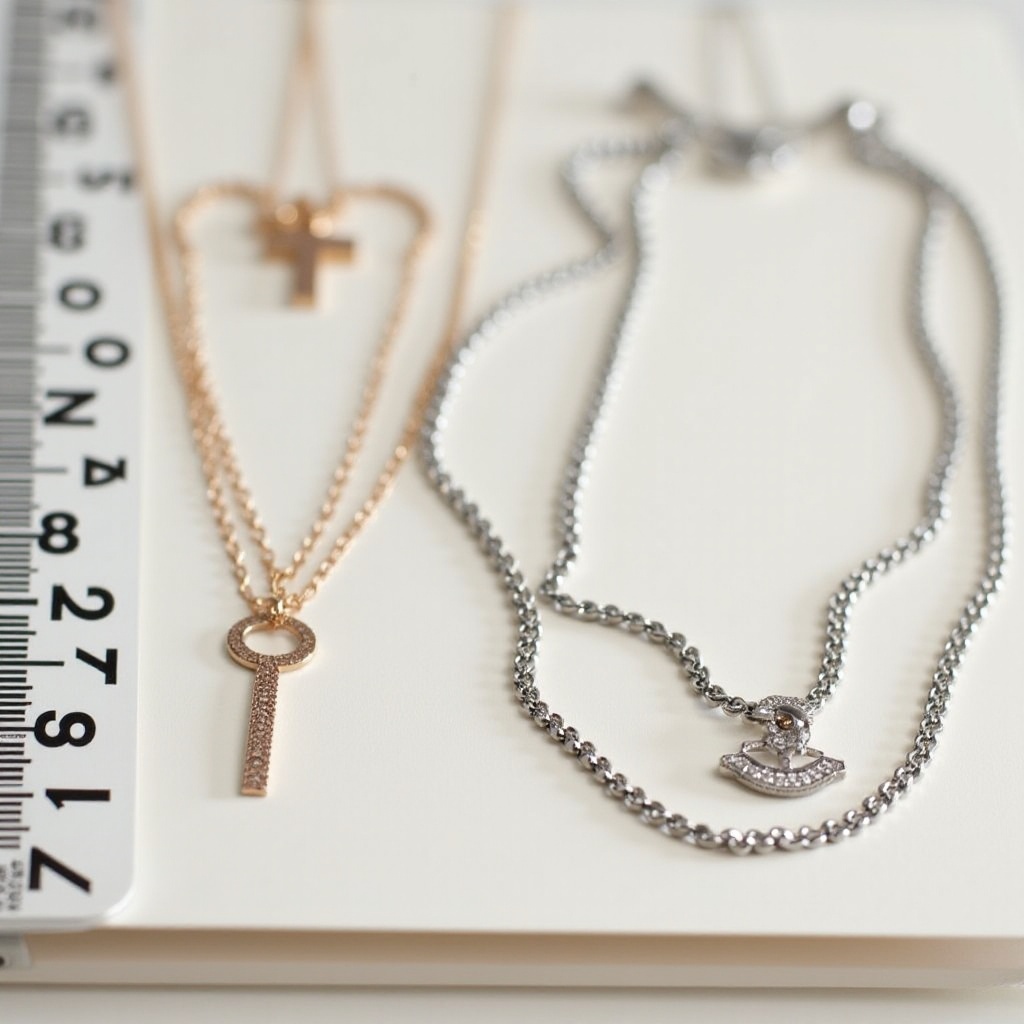In the realm of fashion and accessories, the right necklace can be a game-changer, elevating your ensemble while reflecting your personal style. Yet, the true beauty of a necklace often lies in its perfect fit around your neck. When a necklace is too long or too short, it can detract from rather than enhance your overall look. Measuring necklace length may seem straightforward, but accuracy is key to achieving a perfect fit. This guide is designed to equip you with the knowledge to measure your necklaces accurately, helping you make informed buying decisions and ensuring each piece complements your wardrobe perfectly. We’ll explore various necklace styles and standard lengths, walk you through the measurement process using different tools, and discuss common mistakes to avoid. By understanding these aspects, you can confidently select necklaces that not only fit well but also enhance your style.
Understanding Necklace Lengths
To accurately measure a necklace, it’s important to first understand the common lengths and their respective characteristics. Different lengths cater to various styles and purposes:
– **Choker (14-16 inches):** Sitting snugly around the neck, chokers are perfect for a classic, timeless look. They pair well with off-the-shoulder or open-neck tops.
– **Princess (18 inches):** Falling just below the collarbone, this length is popular for its versatility and elegance. It complements virtually any neckline and is a go-to choice for many.
– **Matinee (20-24 inches):** Ideal for business and casual wear, matinee necklaces rest at the top of the bust, offering a sophisticated touch to more formal apparel.
– **Opera (28-36 inches):** Draping stylishly below the bust, opera-length necklaces add drama and elegance, often suitable for formal occasions or layering.
– **Rope (36 inches and longer):** A flexible length allowing various styling options, such as doubling up for layers or creating a wrapped look for a unique flair.
By understanding these standard lengths, you can better assess your preferences and accurately measure your necklaces, ensuring they align with your styling needs.

Steps to Measure the Length of a Necklace
Precision is vital when measuring a necklace, and selecting the right tool can make all the difference. Below, we detail methods to accurately measure necklace lengths using readily available tools.
Using a Measuring Tape
A flexible measuring tape is arguably the best tool for measuring necklaces with precision. To begin, lay the necklace on a flat, even surface, ensuring the chain is not twisted. Attach one end of the tape to the clasp and extend it along the necklace to the other end of the clasp. For an accurate reading, keep the tape taut throughout. This method proves particularly effective for standard chain necklaces, providing precise measurements that align with your personal needs, all from the convenience of your home.
Employing a Ruler or Yardstick
If a measuring tape isn’t available, a sturdy ruler or yardstick serves as an excellent substitute. Begin by laying the necklace flat, ensuring it is straight. Align the ruler with the necklace, making sure to measure from clasp to clasp for accuracy. This method works best for necklaces that are devoid of twists or intricate links, and it ensures you capture the full length without deviations.
Measuring Complex Necklace Designs
For necklaces featuring intricate designs, loops, or multiple strands, measuring can be more challenging. In such cases, lay the necklace out on a flat surface as naturally as possible, and if needed, employ a flexible wire to follow the necklace’s curves. Use the wire to mimic the path of the necklace and measure the wire with a ruler or tape for more complex measurements. By addressing the complexity, you ensure that every unique design is measured appropriately, guaranteeing optimal fit when worn.

Common Mistakes to Avoid
Accurate measurement of necklace lengths can be thwarted by several common mistakes. Here’s what to look out for:
– **Ignoring Clasp Length:** A frequent oversight is failing to include the clasp in the total measurement, which can skew the result significantly. Always include the clasp in your measurement to ensure precision.
– **Not Fully Straightening the Necklace:** Any curvature or kink can lead to mismeasurement. Always ensure the necklace is fully extended in a straight line to prevent inaccuracies.
– **Relying on One Measurement:** A single measurement can sometimes be off due to simple misplacement or reading errors. For accuracy, measure multiple times and average the results.
By being aware of these pitfalls, you can avoid measurement mistakes, ensuring you obtain the true length of your necklace.

Summary
Mastering the art of measuring necklace length requires a combination of understanding standard sizes, employing the right tools, and vigilance to avoid common errors. Accurate measurement is not just a practical skill; it enhances the aesthetic harmony of your ensembles. Whether selecting a chic choker, a versatile princess necklace, or an elegant opera length, precision helps you choose pieces that complement your apparel seamlessly. As you hone this skill, selecting necklaces will become intuitive, enhancing your style with confidence. With these insights, you’re well-prepared to measure with accuracy and select necklaces that are perfectly tailored to your style aspirations.
How can I accurately measure the length of a necklace using a tape measure?
To accurately measure the length of a necklace using a tape measure, follow these steps: First, lay the necklace flat on a table or another flat surface to avoid any distortion in measurement. Use a soft, flexible tape measure typically used for tailoring. Start at one end of the necklace and measure to the other end, ensuring the tape is laid flat against the surface to get the most precise reading. If the necklace has a clasp, measure with the clasp closed. Make sure to note the measurement in your preferred unit, such as inches or centimeters. This method ensures you account for the entire length of the necklace, including any clasps or extensions.
What are the average necklace lengths for men, and how can I measure them in inches or cm?
Average necklace lengths for men typically range from 18 to 30 inches (46 to 76 cm). Here’s a quick guide: an 18-inch necklace falls around the base of the neck; a 20-inch necklace sits at the collarbone; 22 inches generally falls a few inches below the collarbone, and lengths of 24 to 30 inches rest on or below the chest area. To measure for a necklace in inches or centimeters, you can use a soft tape measure around the intended area where the necklace will sit. Wrap the tape measure around your neck, positioning it at the desired resting point of the necklace, and note the measurement where the tape meets.
How do you measure a necklace for selling purposes, and is there a necklace size chart in cm?
To measure a necklace for selling purposes, accurately determine its full length using a soft tape measure, including the clasp and any extensions used. Whether displaying the measurements in product descriptions or providing size guides, ensure consistency by measuring each piece in the same manner. Yes, there are standardized necklace size charts available in centimeters. For example, common lengths include 40 cm (choker), 45 cm (princess length), 55 cm (matinee), and 76 cm (opera). These charts serve as a helpful guide for both retailers and buyers to understand the necklace’s expected fit regarding body placement. When selling, providing both measurements (inches and centimeters) enhances the buyer’s understanding and increases accuracy in product listings.

